This article will study inhibitor enzymes, their structure, and various examples, along with all the pertinent information.
A substance that connects to an enzyme and inhibits its activity in biological processes is known as an inhibitor enzyme. Here are some inhibitor enzyme example based on reversible and irreversible inhibitor enzymes.
What is an inhibitor enzyme?
A substance that connects to an enzyme and inhibits its activity in biological processes is known as an inhibitor enzyme. As inhibitor enzymes are often specialized to one enzyme and function to restrict that enzyme’s activity, they play a major role in all cells.
Molecules could block enzymes in a metabolic pathway encoded later in the process, reducing the production of no longer necessary compounds. Negative efficacy is an important method for a cell to maintain homeostasis.
Nucleases and proteases, for example, are important enzymes that, if left unregulated, might destroy a cell. Inhibitor enzymes can join in either a reversible or irreversible manner. Irreversible inhibitor enzymes make a chemical bond with the enzyme and keep it from working until the binding is dissolved.
A reversible inhibitor detaches from its target enzyme relatively quickly because it becomes quite weakly associated with it. On the other hand, an irreversible inhibitor disintegrates progressively from its target enzyme due to its tight binding to its active site, thereby preventing the enzyme molecule.
Competitive, Uncompetitive, and Noncompetitive inhibitor enzymes are the three main categories of inhibitor enzymes.
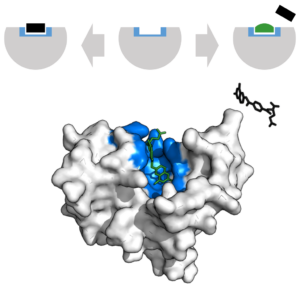
Inhibitor Enzyme Structure
The structure of enzymes or proteins dependent on inhibitors varies depending on whether they are reversible or irreversible. By making greater use of structural data, the productivity of the inhibitor discovery process could be enhanced even more.
Enzymatic Inhibitor three-dimensional structures are increasingly getting constructed at high resolution or in a secondary structure that yields data that should be more valuable for inhibitor creation or discovery.
The significance of water content as a potential inhibitor competition for binding to target enzymes has improved its structure. In dealing with the emergence of resistance, molecular genetics techniques and target enzyme structures are likely to be utilized more consistently.
Detecting adaptable inhibitors from among the enormous amount of substances in chemical databases is advancing, leading to new machine learning algorithms.
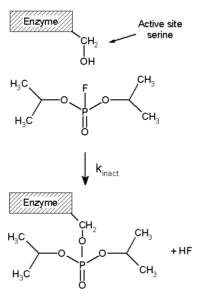
Inhibitor Enzyme Example
Here are some examples of inhibitor enzymes based on reversible and irreversible inhibitor enzymes.
Read more about Example of Coenzyme
1. Methotrexate
Methotrexate is a competitive inhibitor of dihydrofolate reductase. It affects cellular replication by impeding the translation of dihydrofolate to tetrahydrofolate. This inhibitor enzyme has antiproliferative as well as anti-inflammatory properties.
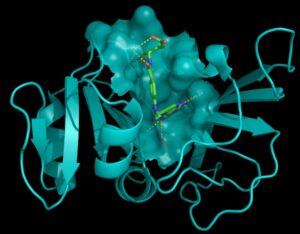
2. Phenserine
Phenserine is a non-competitive and selective inhibitor of acetylcholinesterase. It targets the acetylcholinesterase enzyme specifically.
3. Huperzine A
Huperzine A is a Lycopodium alkaloid active constituent enzyme that is effective. It’s an acetylcholinesterase inhibitor that is indeed efficient, reversible, and selective.
4. Protease inhibitors
Protease inhibitors, such as saquinavir and ritonavir inhibit proteases from doing their functions. Most protease inhibitors found in nature are made up of proteins.
5. Neuraminidase inhibitors
Neuraminidase inhibitors restrict viruses from being released from contaminated host cells by inhibiting the action of the viral neuraminidase protein. It prevents the virus from spreading in the respiratory system by stopping new host cells from becoming infected.
6. Protein kinase inhibitors
Protein kinase inhibitors, such as Fostamatinib, are enzyme inhibitors that prohibit one or even more protein kinases from functioning.
7. Oxalate
Oxalate, often known as oxalic acid, is a lactate-competitive inhibitor enzyme. It’s a chemical found naturally in plants.
8. Malonate
Malonate reversibly inhibits succinate dehydrogenase. It is an essential component of the tricarboxylic acid cycle.
9. Glutamine synthetase
Glutamine synthetase is the inhibitor enzyme that transforms glutamate and ammonia into glutamine, inhibiting glutamine synthetase functioning.
10. Diisopropylfluorophosphate (DFP)
The most powerful inhibitor of serine proteases is diisopropylfluorophosphate (DFP). It’s an irreversible inhibition of an enzyme.
11. Alpha- difluoro-methyl ornithine (DFMO)
Alpha-difluoro-methyl ornithine (DFMO) is an irreversible inhibitor and a selective ornithine decarboxylase inhibitor.
12. Phenothiazine inhibitors
Phenothiazine inhibitors are a potential and competitive inhibitor enzyme for trypanothione reductase.
13. tripeptidyl-peptidase I
Tripeptidyl-peptidase-I is a peptidase inhibitor that links to or inhibits the action of peptidases. These are enzymes that catalyze the breakdown of peptide bonds.
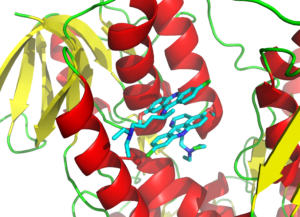
14. Ciprofloxacin
Ciprofloxacin is a bactericidal antibiotic with a strong inhibitory effect. It is also a bacterial gyrase inhibitor.
15. Cimetidine
Cimetidine is a hepatic cytochrome inhibitor. It competes with histamine to stimulate H2-receptors in the posterior cells of the stomach.
16. Isoniazid
Isoniazid is a cytochrome inhibitor enzyme with a mechanism. It inhibits the synthesis of lipids and DNA.
17. Erythromycin
Erythromycin is a cytochrome P450 enzyme inhibitor linked to several clinically important events.
18. Cyclooxygenase
Human carbonic anhydrase II is inhibited by the cyclooxygenase inhibitor enzyme. Prostaglandins and thromboxane are formed as a result of it.
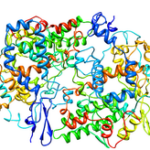
Also Read:
- Do prokaryotes have centrioles
- Lysosomes in cytoplasm
- Unique characteristics of arachnids
- Is protein receptor
- Motile bacteria examples
- Dna replication steps
- Protein synthesis in cytoplasm
- Chloroplast
- Lobster examples
- Globular protein examples
Hey! I’m Roshny Batu. I got a Bachelor of Science degree in Botany. In the domain of academic writing, I consider myself fortunate to be a part of the Lambdageeks family as an SME in Bio-Technology. Apart from that, I love designing interiors, painting, and mastering makeup artist skills.